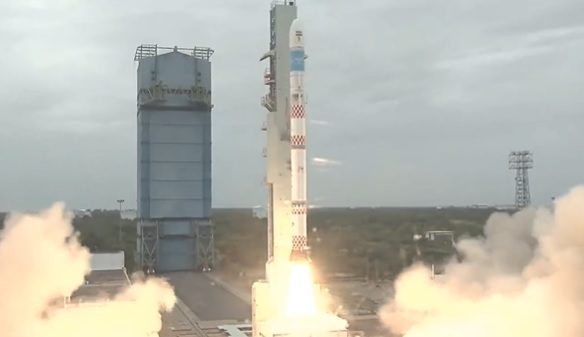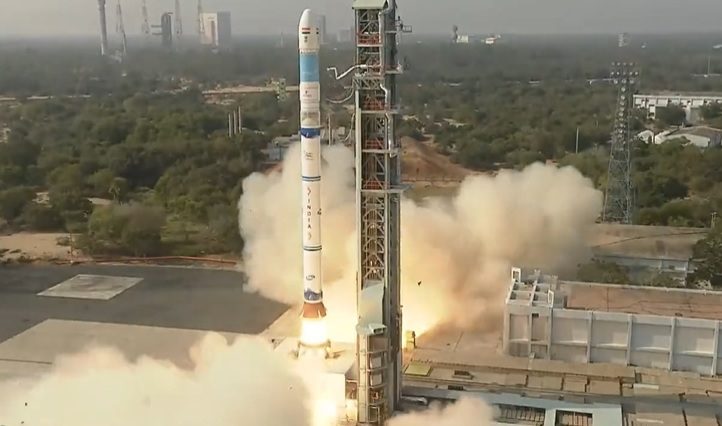An investigation by the Indian Space Research Organisation (ISRO) into the failure of the maiden flight of its latest rocket, the SSLV, has revealed that an exceptional shock during separation compromised the guidance system.
The SSLV-D1 launch seemed to go well with a good first and second-stage burn after it lifted off from the Sriharikota launch site at 0348 GMT on 7 August 2022. However, later in the flight it became apparent that the fourth stage, the Velocity Trimming Module (VTM), had failed to circularise its orbit into the planned 356 km. Instead it left the satellites in an unstable fractional 356 x 76 km orbit.
The main payload EOS-02 (India), a small 142 kg medium resolution Earth imaging satellite, and Azaadsat, an 8U cubesat built by students, decayed immediately, as did the VTM upper stage.
The VTM was supposed to have burnt for 20 seconds at 653 seconds after launch. The investigation found that a violent shock during the separation of the second stage from the third stage saturated six accelerometers in the rocket’s guidance system. This triggered the guidance system to think that they had malfunctioned. It moved the flight to “salvage mode” using open-loop guidance not requiring accelerometer input during the third-stage burn. Unfortunately, the salvage mode, by design, also prevented the firing of the VTM (it was thought that this would mess up the salvage process). The payloads were left in an orbit with an unstable low perigee due to a velocity shortfall of 56 m/s along with a pointing inaccuracy.
Corrective measures since taken by ISRO have included adding a wait time into the fault detection system before the accelerometers are judged to be faulty. The separation system has been changed to one that produces a less violent shock, and a new salvage mode will employ a closed-loop guidance system using data from the Indian NavIC navigation system.
Update on 10 February 2023: The next SSLV launch (SSLV-D2) took place successfully from Sriharikota at 0348 GMT on 10 February. It carried the EOS-07 Earth observation satellite plus two smaller satellites: Azaadsat 2, a replacement for the lost Azaadsat student satellite, and Janus-1, an internet-of-things communications test 6U cubesat. Just over 15 minutes after launch, all three payloads were successfully deployed to their designated 450 km circular LEO orbits.









